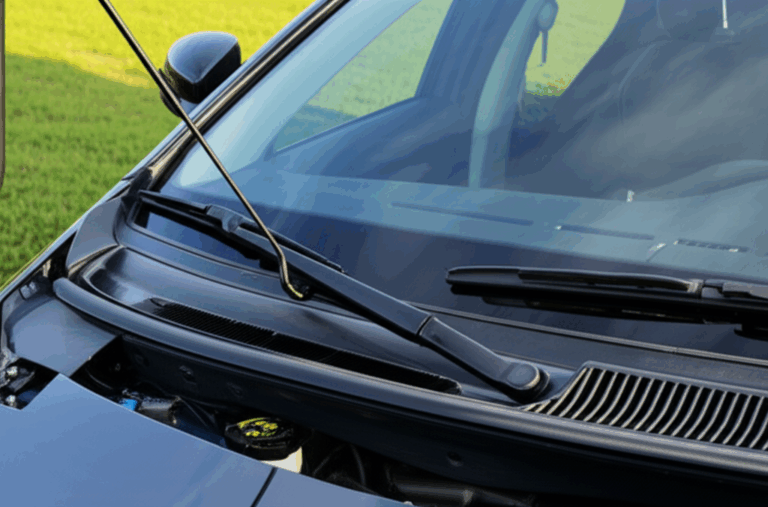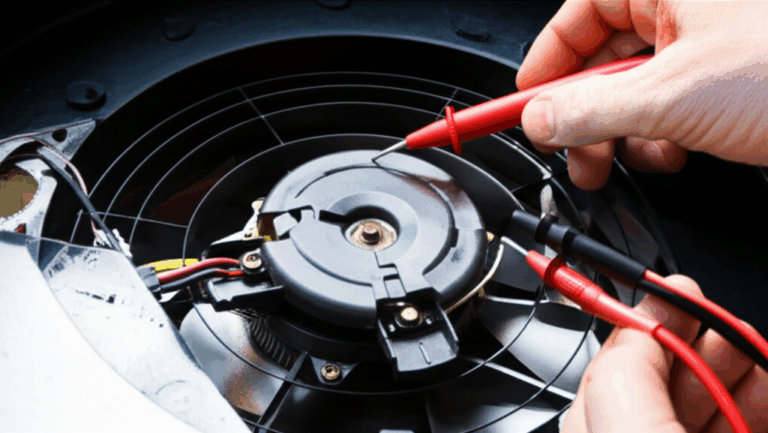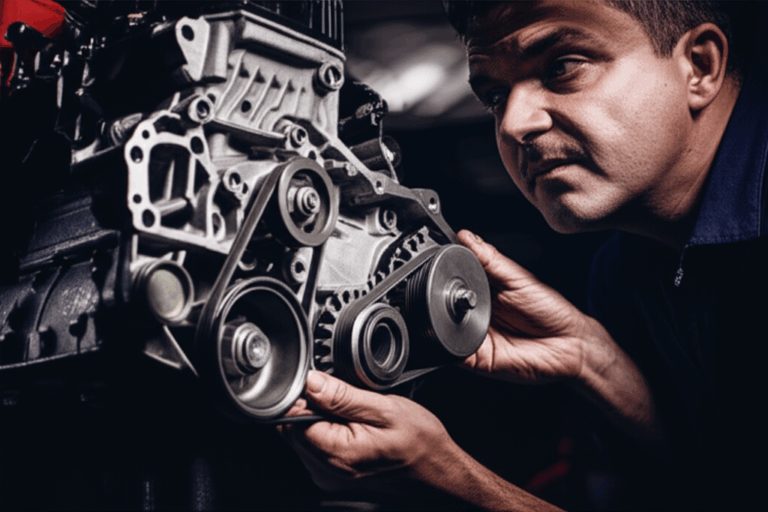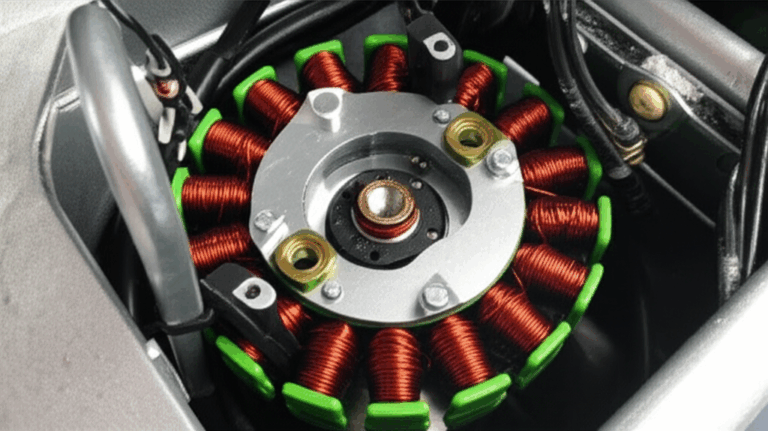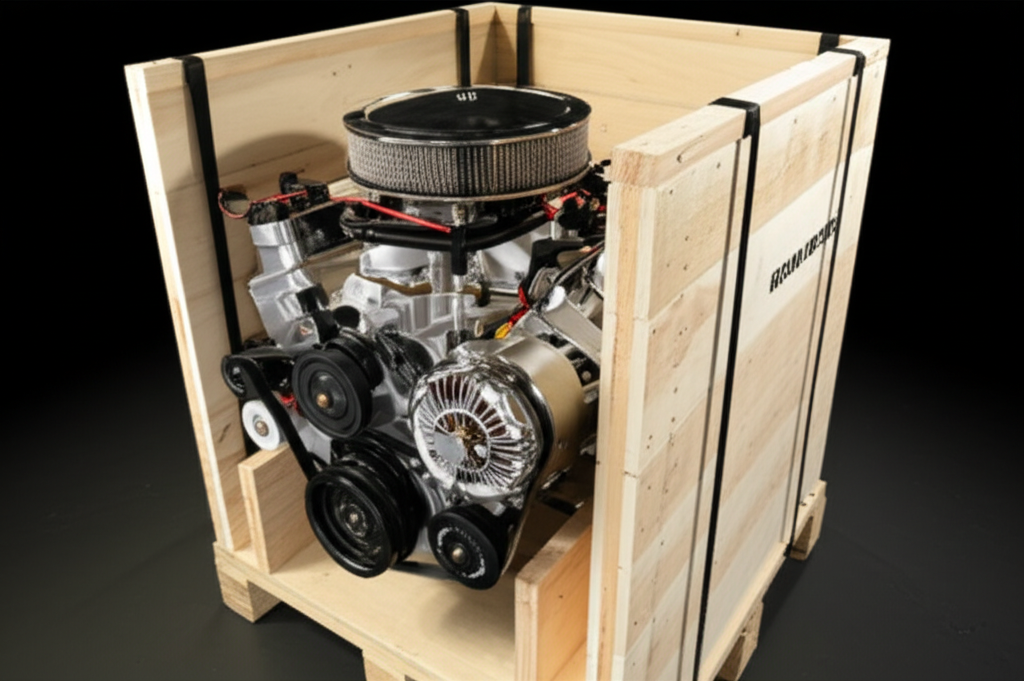
Motor Laminations Made Clear: How Materials and Manufacturing Drive Efficiency, Cost, and Reliability
Every design engineer faces the same tug-of-war. You need higher motor efficiency and power density. You also need a design that can be produced at volume without surprises. If you have asked how lamination thickness, steel grade, or stacking method will affect your motor’s performance and your project’s budget you are in the right place.
Think of this as a practical guide from a knowledgeable engineering partner. We will cut through jargon. We will explain the physics behind losses. We will lay out your material and process options with real trade-offs. Then we will give you a short set of next steps so you can move forward with confidence.
Before we dive in a quick analogy can help. In the internal-combustion world people love the convenience of a “crate motor.” You get a pre-assembled, dyno-tested engine with a warranty and known horsepower and torque. You avoid the complexity of machining and assembly. In electric machines the closest equivalent is a well-engineered lamination stack and core assembly delivered ready for winding or rotor die casting. You still need to integrate the inverter, cooling, and controls. Yet a robust lamination design becomes the foundation that makes the rest of the system “plug-and-play” in the best sense.
In This Article
- Why lamination choices are critical to motor performance and cost
- The fundamentals: eddy currents, hysteresis, and core loss
- Material options for motor laminations and how to select them
- Manufacturing processes that matter: cutting, stacking, bonding, annealing
- Design choices for stators and rotors, including BLDC and induction machines
- Matching materials and processes to your application
- A practical analogy to “crate motors” for procurement and program managers
- Myths to avoid and a concise engineering takeaway
Part 1: The Relatable Hook — Why Lamination Choices Are Critical
You want more efficiency. You want a cooler running motor with less noise and less iron mass. You want to hit target torque per amp without driving up copper or magnet cost. What often stands in the way is not your electromagnetic model. The friction usually comes from lamination decisions that feel secondary during concept work yet loom large in production.
Here is the core problem:
- The wrong lamination thickness at your operating frequency will inflate eddy current loss and heat.
- A steel grade that looks good on a datasheet can underperform once you introduce cutting burr, residual stress, and stack factor penalties.
- A manufacturing process that works for prototypes can blow up the cost curve in production.
- Assembly choices like interlocking vs bonding vs welding change magnetic performance and mechanical robustness.
You do not have to guess. A few first principles plus a clear view of options will let you steer material and process choices that actually deliver what your FEA promised.
Part 2: What’s Really Going On? The Engineering Fundamentals
Let’s demystify “core loss.” Two main culprits turn electrical energy into unwanted heat in motor cores: eddy current loss and hysteresis loss.
- Eddy currents: Imagine a river with big swirling eddies behind rocks. In a motor core the changing magnetic field induces circulating currents in the steel. Those currents meet resistance which creates heat. Thinner, insulated laminations break up those “whirlpools.” You get many tiny swirls instead of a few big ones which dramatically cuts loss. This is why lamination thickness drops as frequency rises.
- Hysteresis: Magnetic domains in the steel flip back and forth as the field alternates. That flipping is not free. Energy is lost each cycle because of the material’s coercivity which is the resistance to changing magnetization. Lower coercivity means less hysteresis loss. You select the steel grade and heat treatment to manage this.
A few terms to keep straight:
- Magnetic permeability: How readily the material carries magnetic flux. Think of it like how easily a sponge pulls in water.
- B-H curve: The relationship between magnetic flux density B and magnetic field strength H. A narrow hysteresis loop on this curve means lower hysteresis loss.
- Saturation flux density: The ceiling for how much flux the material can carry before performance falls off a cliff. Higher saturation supports higher torque density.
- Resistivity: Higher electrical resistivity reduces eddy currents. Silicon and some alloying elements raise resistivity.
How thickness and frequency interact
- Eddy current loss scales roughly with the square of lamination thickness and the square of frequency. Double the thickness and you quadruple that part of the loss. Double the electrical frequency and you quadruple it again. This is why 0.50 mm laminations can be fine at 50/60 Hz yet look terrible at several hundred hertz electrical frequency common in EV traction machines.
- Hysteresis loss scales with frequency and the area of the hysteresis loop which depends on the steel grade and processing.
Stack factor and insulation coating
- You do not get a solid block of steel even if your CAD shows it. Insulation coatings between laminations take space. Adhesives or bonding films add more. The ratio of actual steel height to stack height is the stack factor. A lower stack factor reduces net area for flux which can lower torque if you do not account for it. Specify and measure it early to avoid surprises.
Residual stress and cutting damage
- Cutting methods introduce plastic deformation and micro-cracks near the cut edge. That damaged ring raises local losses and reduces permeability. Post-process annealing can relieve this to a degree depending on the material and anneal schedule.
Put simply laminations reduce eddy currents the right steel reduces hysteresis and better manufacturing keeps the material you bought performing as advertised.
Part 3: Your Options Explained — Materials vs Manufacturing
You have two big levers: the lamination material and the manufacturing process. Let’s walk them one by one with practical trade-offs.
Material Considerations
1) Non-oriented silicon steels (NOES)
- Best for rotating machines where flux rotates rather than stays in one direction.
- Grades often marketed by loss classes or M numbers. Lower loss grades cost more yet earn their keep at higher frequencies or efficiency targets.
- Typical thicknesses: 0.50 mm, 0.35 mm, 0.30 mm, down to 0.20 mm or thinner for high-frequency machines.
- Pros: Balanced performance for motors good availability broad supplier base. Coatings available in many classes for punchability, bondability, and corrosion resistance.
- Cons: Costs rise as thickness and loss go down. Mechanical properties can be sensitive to cutting damage.
2) Grain-oriented silicon steels (GOES)
- Designed for transformer cores where flux is primarily in one direction. You see huge efficiency gains when the flux follows the rolling direction.
- Pros: Very low loss in rolling direction. Ideal for transformer cores and low-frequency magnetic circuits.
- Cons: Poor performance off-axis which makes it a poor fit for most rotating motors. Better suited for specialized axial-flux paths or transformer-like parts.
- If you work with transformers you likely know GOES by CRGO. For that domain see resources on transformer lamination core.
3) High-silicon NOES and thin-gauge steels
- For traction motors and high-speed BLDC machines you may need 0.27 mm, 0.20 mm, or thinner. The eddy-current savings at a few hundred hertz electrical frequency can be dramatic.
- Pros: Lower core loss at high frequency which reduces heat and may shrink cooling needs.
- Cons: Higher cost tougher to stamp without burr and fracture. Lasers can cut it cleanly yet affect the heat-affected zone if not optimized.
4) Cobalt and nickel-iron alloys
- For extreme power density and high temperature performance. Aerospace and high-speed spindles use these.
- Pros: High saturation flux density and good strength at elevated temperatures. They help push torque density where every millimeter counts.
- Cons: Very high cost and constrained supply. Processing routes are more stringent. Reserve for cases where the performance payoff is clear.
5) Powdered iron soft magnetic composites (SMC)
- If your design wants true 3D flux and complex geometries SMC can shine. Each particle has insulation which isolates eddy currents.
- Pros: Near-isotropic magnetic properties simplified 3D shapes via pressing lower eddy currents at mid frequencies for certain shapes.
- Cons: Lower permeability and saturation vs steel stacks which limits torque density in many motors.
Material standards and data
- Look for datasheets compliant with IEC 60404 test methods for magnetic properties. Many suppliers also reference ASTM A677 and A683 for steel and ASTM A976 for insulation coatings. You need comparable data at your intended induction level and frequency because losses vary with flux density.
If you need a quick, structured overview of materials and supply options see electrical steel laminations.
Manufacturing and Assembly Processes
1) Cutting: stamping vs laser vs EDM
- Progressive-die stamping: The go-to for volume. Lowest cost at scale with high throughput. Requires upfront die investment. Burr and mechanical stress must be optimized through die design, lubrication, and maintenance. Ideal when you have stable geometry and volume.
- Laser cutting: Excellent for prototypes and low-volume runs. Delivers tight tolerances and quick turns without tooling. The heat-affected zone can raise local loss if parameters are not dialed in. It scales less well for high volume due to cost per piece and cycle time.
- Wire EDM: Superb edge quality with minimal mechanical stress and heat. Slow and costly which makes it fit for test coupons, short runs, or critical features.
2) Post-cut treatments
- Stress-relief annealing: Reclaims magnetic performance lost to cutting. Common for GOES transformer laminations. Used selectively for NOES motor laminations because cost and distortion can outweigh benefits unless losses are extreme.
- Deburring: Lowers burr height to reduce shorting between laminations and minimize insulation damage.
3) Insulation coatings and bonding
- Organic or inorganic coatings prevent interlaminar electrical contact. Some coatings support bonding during cure which enables glue-bonded stacks.
- Coating class affects punchability, weldability, and thermal stability. Reference ASTM A976 for classification.
- Bonding vs interlocking vs welding:
- Interlocking: Tabs formed in the lamination that snap together. Think LEGO bricks for steel. It creates a rigid core without heat from welding. It can form small air gaps at interlocks which changes local flux paths. Great for speed and simplicity at scale.
- Bonding: Adhesive-coated laminations cured under pressure. Delivers high stack factor, low vibration, and excellent mechanical integrity. Adds process steps and cost. Strong choice for high-speed rotors and NVH-sensitive designs.
- Welding: Spot or seam welds fuse the stack. Strong mechanically. Heat can degrade local magnetic properties. Use sparingly on flux-critical regions.
4) Rotor die casting and skew
- Induction rotors use die-cast aluminum or copper bars with end rings. Casting parameters affect porosity, bar fill, and balance. Your lamination bridges and slot geometry must survive casting loads.
- Skewing the rotor or stator slots reduces cogging torque and acoustic noise. Skew introduces a small penalty in torque. You balance these effects based on application priorities.
5) Tolerances and metrology
- Control burr height because burr shorts can destroy the benefit of thin laminations. Define and measure it.
- Specify stack factor measurement method. Include sampling frequency.
- Use IEC 60404 methods for magnetic testing of representative stacks, not just single sheets.
If you want to see how the big pieces come together browse examples of motor core laminations. You will find stator and rotor stacks that match the processes above.
Part 4: Design Choices by Subassembly — Stators and Rotors
Stator Design Considerations
- Tooth and slot geometry: Narrow tooth tips can saturate at high current or when magnets pass. Balance tooth width with slot fill and thermal paths. Rounded tooth tips reduce local saturation and noise.
- Slot fill and winding approach: Distributed windings reduce harmonics. Concentrated windings simplify manufacturing and can hike torque ripple if unaddressed. Insulation space is real so plan for fill factor achievable on your chosen winding line.
- Back-iron thickness: Too thin and you push back-iron into saturation at peak load which adds loss and heat. Too thick and you carry dead steel mass. Aim for near-saturation at rated peak with margin for transient events.
- Interlocks and bridges: Place them in low-flux regions. Avoid creating unintended reluctance notches.
For a deeper dive into stator-specific considerations see stator core lamination.
Rotor Design Considerations
Induction rotors
- Bar shape and slot geometry set the rotor’s resistance profile. Deep-bar or double-cage designs can improve starting torque and efficiency trade-offs.
- End ring design affects mechanical strength and current distribution. Casting consistency drives reliability at high speed.
- Mechanical containment: High-speed rotors want containment sleeves. Sleeves add eddy loss. Choose materials and thickness carefully.
Permanent magnet rotors (IPM/SPM)
- Bridge thickness over interior magnets sets your mechanical safety margin. Thin bridges reduce leakage and improve saliency. Too thin and you risk cracking during overspeed or demag events.
- Magnet material and temperature: NdFeB offers high energy density yet loses coercivity as temperature rises. You must design the lamination path and cooling to avoid irreversible demagnetization.
- Eddy-current mitigation: Segment magnets and include electrical insulation along magnet boundaries. Use thinner laminations at higher electrical frequency to cut rotor iron loss.
Brushless DC and traction machines
- BLDC stators often use concentrated windings with high slot fill. This pushes localized flux peaks in teeth. Use thinner laminations and high-grade NOES to control tooth loss.
- Traction motors operate at high electrical frequencies across a wide speed band. Design for loss at both low-speed high-torque and high-speed cruising conditions. Skew and slot/pole combinations help control NVH.
If you specialize in BLDC architectures the examples under bldc stator core show common slot geometries and stacking approaches that balance performance with manufacturability.
For rotor-specific production notes including bonding and balance strategies see rotor core lamination.
Part 5: Which Application Is This For? Matching Choices to Use Cases
You do not select a lamination material in a vacuum. Match the operating frequency, duty cycle, and production volume to your material and process mix.
- Industrial 50/60 Hz motors
- Material: 0.50 mm or 0.35 mm NOES depending on efficiency target.
- Process: Progressive stamping with interlocks or welds for cores. Minimal post-cut anneal.
- Why: Low electrical frequency means eddy currents are manageable with standard gauges. High volumes favor dies and interlocks.
- High-speed BLDC or servo motors (200–800 Hz electrical)
- Material: 0.35 mm down to 0.20 mm NOES with low loss grade. Consider segmented magnets and thin laminations to manage rotor loss.
- Process: Laser for prototyping then high-precision dies. Bonded stacks to control vibration and improve stack factor.
- Why: Eddy current loss explodes at frequency so thin gauge earns its cost in efficiency and thermal margin.
- EV traction motors
- Material: High-grade NOES at 0.27–0.20 mm typical. Evaluate loss vs cost curve carefully. Some programs explore cobalt alloys for extreme power density yet the economics are punishing.
- Process: High-precision progressive dies with strict burr control. Bonded stators with skew. Tight QA on stack factor.
- Why: Wide speed range and NVH goals push toward thin laminations and bonded stacks for acoustic performance.
- Transformers and low-frequency magnetic circuits
- Material: CRGO with step-lap joints for directional flux paths.
- Process: Shearing or laser cutting with anneal. Careful joint design to minimize localized losses.
- Why: GOES shines when flux stays aligned to the rolling direction.
- Prototyping and pilot builds
- Material: Same grade planned for production if possible.
- Process: Laser cutting with fixtured bonding. Validate magnetic properties on stacked samples not only on sheets.
- Why: You want correlation between prototype tests and production performance.
Part 6: A Practical Procurement Analogy — “Crate Motors” and Turnkey Thinking
Procurement teams often ask for clarity on scope, completeness, and risk. ICE builders answer this with “crate motors.” They sell a pre-assembled engine with known horsepower and torque. You get a warranty. You know what is included from the crankshaft to the intake manifold. Options range from street-legal to racing. Brands like Chevrolet Performance, Ford Performance, and Mopar offer LS, Coyote, and Hemi packages with ECU, wiring harness, and accessories. Retailers like Summit Racing and Jegs make buying frictionless. People compare crate engines to used or rebuilt engines based on cost, reliability, and installation time. They care about dyno-tested power, emissions compliance, and the break-in procedure. The crate approach de-risks the project.
You can apply the same mindset to electric machines even if the components differ.
- Define scope clearly
- For a lamination core does the “package” include the fully bonded stator stack, machining of OD/ID, insulation coating spec, and QA certifications. For a rotor does it include die casting, heat treatment, balancing, and overspeed test results. These mirror the “what’s included” clarity that crate motor buyers expect.
- Require performance validation
- Ask for magnetic characterization on stacked laminations at your target flux densities and frequencies. In ICE land buyers ask for dyno-tested horsepower and torque. In electric land you want measured core loss curves, stack factor, and dimensional capability studies.
- Consider warranty and support
- Race-only crate engines often limit warranties because of extreme use. High-speed rotor stacks face similar caveats due to severe duty. Align expectations and documentation so your warranty matches the application.
- Plan for integration
- “Plug-and-play” means fewer surprises. For ICE crate motors it means the ECU is calibrated and the wiring harness matches the sensors. For electric machines it means the lamination stack meets your press-fit tolerances, varnish or resin systems are compatible, and fixtures exist for winding or assembly. Define interfaces early.
- Balance OEM vs aftermarket mindsets
- OEM crate engines prioritize emissions compliance and drivability. Aftermarket builders chase peak power. Your lamination supplier should give you a similar fork. One path optimizes cost and robustness for volume. The other squeezes loss out of every tooth for maximum efficiency at higher unit cost.
People sometimes ask for “plug-and-play engine solutions” in electrification the way they ask for turnkey ICE products. That instinct is sound. The more complete and characterized your lamination and core subassemblies are the less risk you carry downstream in winding, impregnation, or rotor casting.
Part 7: Common Myths and Misconceptions About Laminations
- Myth: Thinner laminations always win
- Reality: Thin gauge cuts eddy losses at high frequency. At low frequency it may not pay for itself. Thinner sheets also drop stack factor and can drive tooling and handling complexity.
- Myth: Laser cutting always damages properties more than stamping
- Reality: Poor laser settings can leave a wide heat-affected zone. Good parameter control can minimize it. Poor stamping can do worse by adding burr and residual strain. Evaluate with measurements not assumptions.
- Myth: Interlocking is “cheap” and bonding is “premium”
- Reality: Both have a place. Interlocks shine in high-volume motors with tight cost targets. Bonding can reduce NVH and raise stack factor for sensitive applications. Choose based on your requirement set.
- Myth: Magnetic datasheets tell the whole story
- Reality: Most datasheets show Epstein frame results on flat strips which is a helpful baseline. Your stacked core will behave differently due to stress, coating, and geometry. Test stacks that look like your real parts.
- Myth: You can fix iron loss with cooling
- Reality: You can carry heat away with better cooling. You cannot “cool away” efficiency loss. If your lamination and material choices waste energy you will pay for it every minute the motor runs.
Part 8: Practical Notes on QA, Standards, and Documentation
- Standards to know
- IEC 60404 series for magnetic property measurement.
- ASTM A677 and A683 for electrical steel product standards.
- ASTM A976 for insulating coating classes.
- ISO 286 for geometric tolerances and fits where you define stacks, OD/ID, and press fits.
- Measurements that matter
- Burr height and distribution.
- Stack factor on production-representative samples.
- Core loss and permeability at your operating induction and frequency on stacked specimens.
- Mechanical runout, flatness, and concentricity of stacks after assembly.
- Documentation that saves programs
- Control plans that tie cutting, coating, stacking, and curing parameters to measurable outputs.
- First article inspection reports with magnetic and dimensional data.
- Change control that captures die maintenance, coating supplier shifts, and process drift.
Part 9: Cost and Supply Chain Realities
- Tooling and break-even
- Progressive dies demand upfront capital. You hit a volume threshold where per-part savings outweigh tooling and maintenance. Know that threshold before you commit to laser vs stamping.
- Material availability
- High-grade thin-gauge NOES faces allocation cycles. Plan long lead items early and qualify alternates with controlled testing.
- Scrap strategy
- Lamination nests define scrap rate. Good die design improves material utilization which moves your total cost more than you might guess.
- Regionalization and logistics
- Heavy stacks drive freight costs. Localizing core production can offset higher per-unit pricing through logistics savings and faster response times.
Part 10: Frequently Asked Design Questions — Straight Answers
- How does lamination thickness affect efficiency
- At higher electrical frequencies thinner laminations cut eddy current loss significantly. At 50/60 Hz 0.50 mm can be fine. At a few hundred hertz your design benefits from 0.35 mm or thinner.
- What is the best material for high-frequency applications
- High-grade NOES in 0.27–0.20 mm with low loss at your intended induction is a strong baseline. Cobalt alloys can push power density further at very high speed if the budget allows.
- Should I specify bonding or interlocking
- If you need top NVH, high stack factor, and robust high-speed behavior choose bonding. If you run high volume with cost pressure and the design tolerates a small interlock penalty interlocking is a great choice.
- Do I need a stress-relief anneal after stamping
- Usually not for NOES motor cores because cost and distortion trade poorly. If your measurements show unacceptable cutting-induced loss you can trial anneal schedules on representative stacks.
- What about transformer-like cores in my product
- Use CRGO, step-lap joints, and anneal. Keep flux in the rolling direction where GOES shines.
Part 11: Your Engineering Takeaway — Clear Next Steps
Here is the essence in one place:
- Use physics to drive choices
- Eddy currents love thick steel and high frequency. Counter them with thinner laminations and higher resistivity steels. Hysteresis depends on coercivity which you lower with better steel and controlled processing.
- Match material to frequency and duty
- 50/60 Hz machines can live on 0.50–0.35 mm NOES. High-speed BLDC and traction machines favor 0.35–0.20 mm low-loss NOES.
- Choose manufacturing for phase and volume
- Laser for prototypes and quick turns. Progressive stamping for volume. Control burr and stress either way.
- Specify stack quality not just sheet quality
- Define stack factor, burr height, flatness, interlock or bond strategy, and measurement methods. Ask for magnetic data on stacked lamination specimens.
- Use bonding or interlocking based on real needs
- Bonding lowers NVH and raises stack factor for premium applications. Interlocking powers cost-effective production.
- Plan QA and supply chain early
- Lock in material availability. Build control plans. Qualify alternates. Measure what matters.
Actionable next steps:
1) Write down your electrical frequency range and target induction levels. Anchor material selection to those numbers.
2) Pick a baseline lamination gauge and grade. Ask for supplier core loss curves at your frequency and induction. Verify with stacked tests.
3) Choose a prototype cutting method that maintains correlation to production, then test magnetic properties on real stacks.
4) Decide now if you will interlock, bond, or weld. Document the reasons and quantify stack factor impact.
5) Set burr, stack factor, and flatness limits in your drawings. Reference IEC 60404 methods for magnetic tests and ASTM A976 for coating class.
6) If you are mapping a new product line or seeking a supplier comparison ask for examples and datasheets for core lamination stacks. Use them to benchmark achievable tolerances and processes.
A brief word on the ICE-to-EV analogy we used. Engineers and procurement teams often evaluate ICE upgrades with “crate motor” logic. They compare OEM vs aftermarket crate engines, weigh horsepower and torque, look at dyno-tested results, study warranty terms, and consider installation complexity with ECUs and wiring harnesses. They care about emissions compliance and street legal configurations. That mindset translates well to electric powertrain building blocks. You can frame lamination stacks and motor cores as configurable, validated subassemblies rather than raw steel and drawings. You get better predictability, faster installation into your manufacturing flow, and clearer ROI on efficiency. Call it a turnkey engine for electromagnetics if you like. The naming is different yet the logic holds.
If you want tailored guidance for your application or a quick second opinion on a material and process stack bring your operating frequency, stack height, and performance targets. We will help you get to a practical short list and a test plan that de-risks your next build.

